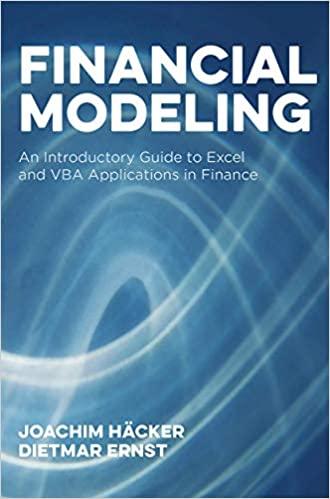Data table tou have been asked to evaluase the economic implications of vanous methods for cooling condenser effluents from a 200 MW steameloctric plant. There are two basic types of cooling towers. wet and moht also play a role in the dectsion-making process? Click the inon to view the alternatives description: Cha the ican to vew the interest and amuly table for discreto conpounding when i=12% per year. The AW of Wet Towet, Mechanical Drat is s (Round to the nearest dollar.) The AW of Dry Tower, Mechanical Dratt is 5 (Fiound to the nearest dolar) The AW of Dry Tower, Natural Dratt is $ (Flound to the nescest dotlat) What is the best aharnasve? Chocse the cocrect answer below. A. Wer Tower, Natural Draft B. Dry Tower, Necharical Drat c. Dry Tomes, Natural Drat D. Wet Tower, Mochanical Drat Shoukt such non sconomie faclors as operating ssues and licensing be taken inta convideration? Choose the correct answer below. No Yes You have been asked to evaluate the economic implications of various methods for cooling condenser effluents from a 200-MW steamelectric plant. There are two basic types of cooling towers: wet and dry. Furthermore, heat may be removed from condenser water by (1) forcing (mechanically) air through the tower or (2) allowing heat transfer to occur by making use of natural draft. Consequently, there are four basic cooling tower designs that could be considered. Assuming that the cost of capital to the utility company is 10% per year, your job is to recommend the best alternative (i.e., the least expensive during the service life). Further, assume that each alternative is capable of satisfactorily removing waste heat from the condensers of a 200-MW power plant. What noneconomic factors can you identify that might also play a role in the decision-making process? Click the icon to view the alternatives description. Click the icon to view the interest and annuity table for discrete compounding when i=10% per year. The AW of Wet Tower, Mechanical Draft is \$ . (Round to the nearest dollar.) The AW of Wet Tower, Natural Draft is $. (Round to the nearest dollar.) The AW of Dry Tower, Mechanical Draft is $. (Round to the nearest dollar.) The AW of Dry Tower, Natural Draft is $. (Round to the nearest dollar.) What is the best alternative? Choose the correct answer below. A. Dry Tower, Natural Draft B. Wet Tower, Mechanical Draft C. Wet Tower, Natural Draft D. Dry Tower, Mechanical Draft Should such non-economic factors as operating issues and licensing be taken into consideration? Choose the correct answer below. No Yes Data table tou have been asked to evaluase the economic implications of vanous methods for cooling condenser effluents from a 200 MW steameloctric plant. There are two basic types of cooling towers. wet and moht also play a role in the dectsion-making process? Click the inon to view the alternatives description: Cha the ican to vew the interest and amuly table for discreto conpounding when i=12% per year. The AW of Wet Towet, Mechanical Drat is s (Round to the nearest dollar.) The AW of Dry Tower, Mechanical Dratt is 5 (Fiound to the nearest dolar) The AW of Dry Tower, Natural Dratt is $ (Flound to the nescest dotlat) What is the best aharnasve? Chocse the cocrect answer below. A. Wer Tower, Natural Draft B. Dry Tower, Necharical Drat c. Dry Tomes, Natural Drat D. Wet Tower, Mochanical Drat Shoukt such non sconomie faclors as operating ssues and licensing be taken inta convideration? Choose the correct answer below. No Yes You have been asked to evaluate the economic implications of various methods for cooling condenser effluents from a 200-MW steamelectric plant. There are two basic types of cooling towers: wet and dry. Furthermore, heat may be removed from condenser water by (1) forcing (mechanically) air through the tower or (2) allowing heat transfer to occur by making use of natural draft. Consequently, there are four basic cooling tower designs that could be considered. Assuming that the cost of capital to the utility company is 10% per year, your job is to recommend the best alternative (i.e., the least expensive during the service life). Further, assume that each alternative is capable of satisfactorily removing waste heat from the condensers of a 200-MW power plant. What noneconomic factors can you identify that might also play a role in the decision-making process? Click the icon to view the alternatives description. Click the icon to view the interest and annuity table for discrete compounding when i=10% per year. The AW of Wet Tower, Mechanical Draft is \$ . (Round to the nearest dollar.) The AW of Wet Tower, Natural Draft is $. (Round to the nearest dollar.) The AW of Dry Tower, Mechanical Draft is $. (Round to the nearest dollar.) The AW of Dry Tower, Natural Draft is $. (Round to the nearest dollar.) What is the best alternative? Choose the correct answer below. A. Dry Tower, Natural Draft B. Wet Tower, Mechanical Draft C. Wet Tower, Natural Draft D. Dry Tower, Mechanical Draft Should such non-economic factors as operating issues and licensing be taken into consideration? Choose the correct answer below. No Yes









